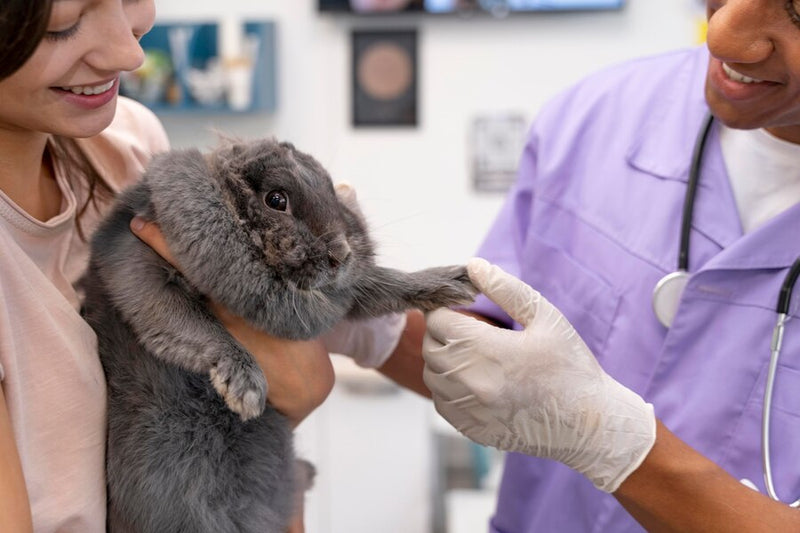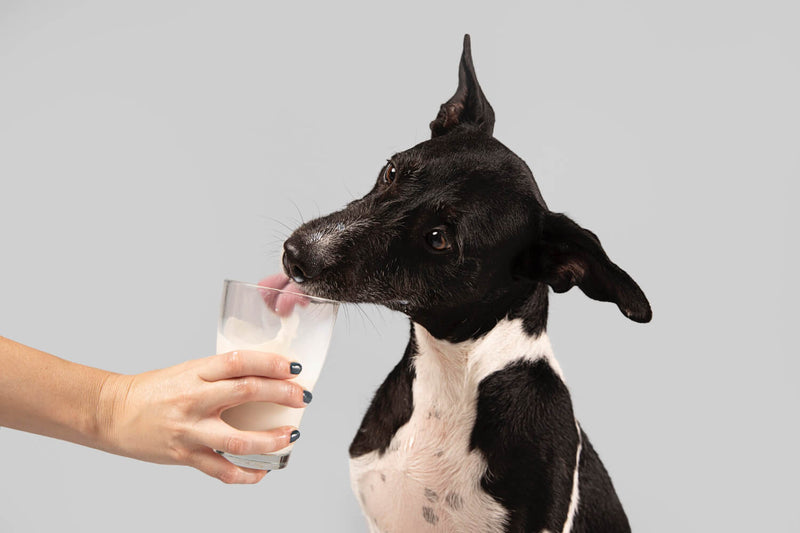
Welcome to Gritty Pet Co.
Your Canadian, specialty Pet Health & Wellness destination. 🇨🇦

Vet Reviewed & Approved
Dr. Ibrar A. is our veterinarian and a key member of our team. ✅
Tick Bites in Dogs, ticks are tiny creatures that can cause big problems for our furry friends. Dogs are often vulnerable to tick bites, which can lead to various health issues if not addressed promptly (1).
In this blog, we'll explore the importance of recognizing the symptoms of tick bites in dogs, discuss effective prevention strategies, and learn about the best ways to treat them. Understanding these aspects is crucial for keeping our canine companions happy and healthy.
Key Takeaways
Tick Identification is Crucial: A tick bite appears as a small red bump on your dog's skin, resembling a mosquito bite. Proper identification and prompt removal (2) are essential to prevent infection and disease transmission.
Effective Tick Removal: Use fine-tipped tweezers or a tick removal tool, pulling steadily without twisting, to minimize the risk of disease transmission. Always clean the bite site afterwards to prevent infection.
Prevention is Better Than Cure: Employ tick prevention strategies like avoiding tick-infested areas, using vet-recommended tick preventatives, and regular grooming (3). Early detection and treatment of tick-borne diseases are crucial for your dog's health.
Identify & Remove Ticks
Spotting ticks on dogs is essential for prompt removal and prevention of tick-borne diseases. Start by thoroughly checking key areas where ticks often hide, such as behind the ears, around the neck, in between toes, and under the tail. Ticks can also be found in less visible areas like armpits and groin.
When removing ticks, it's crucial to use safe methods to avoid causing harm or leaving parts of the tick embedded in the skin (4).
Prepare the Area: Calm your dog and ensure you have good visibility of the tick. If necessary, gently part the fur around the tick.
Use the Right Tools: Opt for fine-tipped tweezers or a tick removal tool, grasping the tick as close to the skin's surface as possible.
Steady Removal: Pull upward with even, steady pressure. Avoid twisting or jerking, which can leave parts of the tick embedded.
Clean the Site: After removal, disinfect the bite area with mild antiseptic.
Dispose of the Tick Safely: Place it in alcohol or a sealed bag for disposal.
Monitor for Symptoms: Keep an eye on the bite site and your dog's health for several weeks for any signs of tick-borne illnesses.
Proper tick removal is vital not only for the dog's comfort but also to minimize the risk of disease transmission. When ticks are removed incorrectly or incompletely, they may regurgitate infectious material into the dog's bloodstream, increasing the likelihood of infection. Therefore, ensuring thorough and careful tick removal is essential for maintaining the dog's health and well-being.

Symptoms of Tick Bites in Dogs
When a dog gets bitten by a tick, there are some things to watch out for. They might start itching a lot, and you might notice redness and swelling in the area where the tick bit them (5). These are common signs that your dog might have a tick bite.
Sometimes, tick bites can lead to more serious problems. After a tick bite, your dog might show signs of a tick-borne disease. These can include symptoms like fever, lethargy (being very tired), loss of appetite, and lameness (difficulty moving around).
Knowing When to Get Help : It's essential to pay attention to your dog's symptoms after a tick bite. If you notice any of the signs mentioned above or if your dog seems unwell in any way, it's a good idea to seek veterinary attention. Your vet can check your dog and give them the right treatment to help them feel better.
Tick Prevention Strategies
Ticks can pose a significant threat to our furry companions, but there are several effective strategies to keep them at bay:
Traditional Methods
Traditional tick prevention methods include the use of collars and spot-on treatments. These products contain active ingredients that repel and kill ticks, providing protection for your pet.
Innovative and Natural Approaches
In addition to traditional methods, there are innovative and natural tick prevention tips to consider. Essential oils, such as cedarwood, lavender, and eucalyptus, have natural tick-repellent properties and can be diluted and applied to your pet's fur. Similarly, diatomaceous earth, a fine powder made from fossilized algae, can be sprinkled in your pet's environment to deter ticks.
Regular Grooming and Environment Management
Regular grooming is essential for tick prevention. Brushing your pet's fur regularly helps to remove loose hair and debris, making it easier to spot and remove ticks. Additionally, keeping your pet's living environment clean and well-maintained, including regularly mowing the lawn and removing leaf litter, can help reduce tick populations in your yard.
Understanding Tick Diseases
Ticks carry diseases that can affect dogs, and it's crucial to recognize and address these illnesses (6):
Lyme Disease : This bacterial infection can lead to joint pain, fever, and lethargy if not treated promptly. Dogs may exhibit lameness and discomfort, requiring veterinary attention to prevent long-term complications.
Ehrlichiosis : Caused by various bacteria transmitted through tick bites, Ehrlichiosis can result in symptoms like fever, fatigue, and loss of appetite. Without timely treatment, it can progress to severe complications affecting multiple organs, emphasizing the importance of early detection.
Anaplasmosis : Another bacterial infection transmitted by ticks, Anaplasmosis can cause fever, joint pain, and decreased appetite in dogs. Early diagnosis and treatment are essential to prevent the disease from worsening and causing further health issues.
Detecting these tick-borne diseases early is crucial for effective treatment. Regular veterinary check-ups and prompt tick removal help reduce the risk of infection. If your dog shows any symptoms after a tick bite, seeking veterinary care promptly ensures proper management and improves the chances of a successful recovery.

Post-Bite Care
After removing a tick, it's important to take care of the affected area properly:
Wound Care : Start by cleaning the bite site with mild soap and water to remove any dirt or debris. After cleaning, disinfect the area with an antiseptic solution to prevent infection. Keep an eye out for any signs of redness, swelling, or discharge, which could indicate an infection.
Monitoring for Infection : It's essential to monitor the bite site for any signs of infection, such as increasing redness, warmth, or pain. If you notice any unusual symptoms or if the area becomes more inflamed, consult your veterinarian promptly for further evaluation and treatment.
Soothing Discomfort : To help alleviate discomfort and reduce itching, you can use home remedies such as applying a cold compress to the bite area or using over-the-counter anti-itch creams or ointments. Calamine lotion or aloe vera gel can also provide relief for irritated skin.
Taking these steps for post-bite care can help ensure proper healing and prevent complications. If you have any concerns or if your dog shows signs of infection or allergic reactions, don't hesitate to seek veterinary advice for appropriate treatment.
Tick Bites in Dogs: Seeking Veterinary Care
After removing a tick from your dog, it's crucial to seek veterinary care to ensure their health and well-being. A veterinarian can perform diagnostic tests to check for any tick-borne diseases that the tick may have transmitted.
Depending on the results, treatment options can include antibiotics or other medications to address the specific disease. Early detection and treatment significantly improve the prognosis for tick-borne illnesses, so consulting a vet promptly after a tick bite is essential for your dog's overall health.
Tick Seasonality & Geography
Ticks can be more active during certain times of the year and in specific regions due to various factors. Tick activity often peaks during warmer months, typically from spring to fall, when temperatures and humidity levels are favorable for their survival and reproduction. In colder climates, tick activity may decrease during winter months but can still occur during milder periods.
Tick species and their prevalence vary by region, with some species being more common in certain areas than others. Factors such as climate, vegetation, and wildlife populations can influence tick distribution and abundance. For example, wooded and grassy areas are known to be hotspots for tick activity, making them higher-risk environments for potential tick encounters.
Tick Bites in Dogs: Myths Debunked
Ticks can be misunderstood, so let's clear up some common myths:
Myth 1 : Ticks are only in rural areas.
Reality: Ticks can be found in urban areas too, so prevention is important everywhere.
Myth 2 : Ticks only bite in summer.
Reality: Ticks can bite all year round, so stay vigilant regardless of the season.
Myth 3 : All ticks carry Lyme disease.
Reality: Different ticks carry different diseases, so be aware of local risks.
Myth 4 : You can remove ticks with matches or jelly.
Reality: Use tweezers to remove ticks safely to prevent disease transmission.
Myth 5 : Tick collars protect pets completely.
Reality: Tick collars help, but combining prevention methods is best for full protection.
FAQ
1. How Do I Know If My Dog Has A Tick Bite?
Look for signs like redness, swelling, or a small bump on your dog's skin. Ticks can hide in fur, so check closely, especially in areas like ears, neck, and between toes.
2. What Should I Do If I Find A Tick On My Dog?
Use fine-tipped tweezers to grasp the tick as close to the skin as possible and pull it out gently and steadily. Avoid squeezing the tick's body. After removal, clean the area with soap and water.
3. Can Ticks Make My Dog Sick?
Yes, ticks can transmit diseases like Lyme disease, Ehrlichiosis, and Anaplasmosis to dogs. If your dog shows symptoms such as fever, lethargy, or lameness after a tick bite, consult your veterinarian for proper diagnosis and treatment.
4. What Does A Tick Bite Look Like On A Dog?
A tick bite may appear as a small red bump, somewhat resembling a mosquito bite. It's common for these bumps to arise at the site of the tick bite or after the tick has been removed, usually resolving within a few days.
5. What Are The Best Preventive Measures Against Tick Bites?
Prevention strategies include avoiding areas with high tick populations, regularly checking your dog for ticks, and using tick prevention products like collars, topical treatments, or oral medications. It's also wise to groom your dog regularly to spot and remove ticks promptly.
Top 3 YouTube Videos on Tick Bites in Dogs
1. Symptoms of Lyme Disease in Dogs - And Why It's SO Dangerous:
Dive into understanding the critical signs of Lyme disease in dogs. This video outlines the importance of early detection and the potential dangers if left untreated.
2. Tick Bites - A Quick Guide for Hikers and Pet Owners:
A concise and informative guide for anyone spending time outdoors with pets. Learn how to protect yourself and your furry friends from tick bites, a common but preventable issue.
3. Natural Homemade Tick Repellent That Works!
Discover how to make an effective, natural tick repellent at home. Ideal for those looking for chemical-free alternatives to keep ticks at bay during outdoor adventures with pets.
Final Thoughts
It's essential to stay informed and proactive when it comes to tick bites in dogs. Regularly check your furry friend for ticks, especially after outdoor activities, and promptly remove any ticks found. Utilize preventive measures such as tick collars and spot-on treatments, and maintain a clean living environment to reduce the risk of tick encounters.
Remember to monitor your dog for any signs of illness after a tick bite and consult your veterinarian for personalized advice and treatment. By staying vigilant and proactive, you can help protect your beloved pet from the dangers of tick-borne diseases and ensure their health and well-being for years to come.
References
- 1. Shaw, S. E., Day, M. J., Birtles, R. J., & Breitschwerdt, E. B. (2001). Tick-borne infectious diseases of dogs. Trends in parasitology, 17(2), 74-80.
- 2. Aktas, M. (2014). A survey of ixodid tick species and molecular identification of tick-borne pathogens. Veterinary parasitology, 200(3-4), 276-283.
- 3. Dantas-Torres, F., & Otranto, D. (2016). Best practices for preventing vector-borne diseases in dogs and humans. Trends in parasitology, 32(1), 43-55.
- 4. Stafford, K. C. (2004). Tick management handbook: an integrated guide for homeowners, pest control operators, and public health officials for the prevention of tick-associated disease.
- 5. Ogbu, K. I., Olaolu, O. S., Ochai, S. O., & Tion, M. T. (2018). A review of some tick-borne pathogens of dogs. JASVM, 3, 140-153.
- 6. Little, S. E. (2007, April). Changing paradigms in understanding transmission of canine tick-borne diseases: the role of interrupted feeding and intrastadial transmission. In 2 nd Canine Vector-Borne Disease (CVBD) Symposium. Mezara del Vallo, Sicily, Italy (pp. 30-4).

















